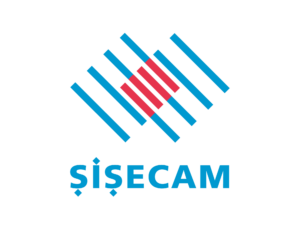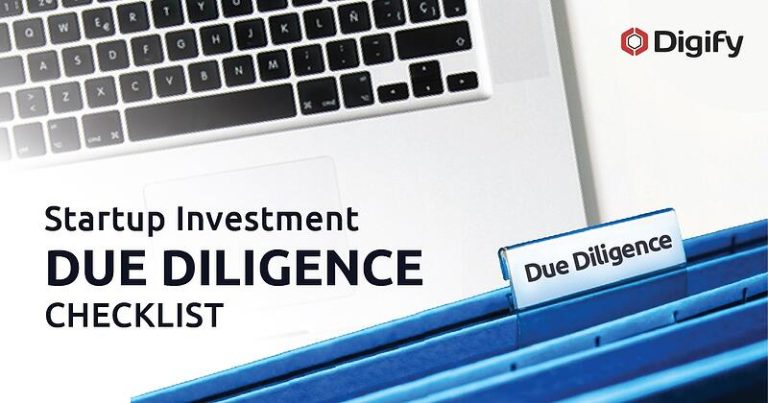As you consider the next step in your startup’s journey, you can take valuable lessons from entrepreneurs who have traveled the path before you to better understand how accessing startup funding can enhance your dream.
Though each startup’s journey will be unique, we believe this ultimate guide to startup funding will steer your course toward a more successful campaign.
What is startup funding?
Virtually all businesses start out as a small business. Some remain small businesses, serving their markets and meeting their owners’ dreams. Others enjoy steady growth as owners reinvest their earnings and continue to expand their services at a steady pace. Another branch of small businesses are those with the potential for explosive growth with the needed capital and leadership. This latter category are generally considered “startup” companies that can reach their potential with startup investment funds.
Investors share in the risk-reward equation of your startup by assuming an equity stake, with the percentage of their stake depending upon the size of the investment and the anticipated value of your company.
Investors bring to the table more than money. Your ideal investor will bring expertise in your field, enhancing your team; contacts with other investors, potential customers and even needed employees to build out your growth engine; and more.
Startup fundraising occurs in different stages, depending upon where your company is in its development. Here’s a basic overview of the startup funding types:
- Bootstrap: During the initial stage of any company, you start your business with no money or with whatever funds you can scrape together, be it your own, your relatives, friends or co-workers.
- Seed rounds: Seed funding is the first round of funds from external sources. Seed investors are like initial supporters that are willing to invest when a founder has an idea and/or a prototype but maybe has not established a market. Seed funding is used to develop a product, enhance the team to get more traction. Companies can go through any number of seed rounds.
- Series A: Once you reach the stage where your company has a product or service and an established market as well as gained sufficient proof points in terms of revenues and what investors refer to as “traction,” you’ll begin to look into Series A funding, where you are dealing with venture capital companies, or more institutional investors. Preparation for a Series A round is more extensive as your company must undergo a more detailed review. Series A rounds tend to run in the $2 million to $10 million range, but can certainly go higher.
- Series B and beyond: The alphabetical extension of your fundraising efforts is potentially endless as long as your company appears to have growth opportunities. Each is a step toward progressively larger fundraising rounds with investors at each round taking higher precedence than the investors in the previous round. Venture capital investors also typically set a timeline for when they expect to exit, or cash out, of your business.
- IPO: If your company gets large enough to outgrow the funding capabilities of these institutional investors, you’ll probably be ready to go public with an initial public offering (IPO).
For the purposes of this guide, we will focus on preparing for venture capital funding rounds as they likely will entail the greatest jump/change in thinking about the future of your company.
The process of raising Venture Capital
Be ready for your life and role in your company to change dramatically as you prepare to raise venture capital. As founder, you likely will dedicate yourself full time to the process of preparing for the funding search, locating and meeting with potential venture capital investors and completing the due diligence process.
The better you prepare yourself and your company in advance for launching your search, the more successful and quicker your outcome is likely to be.
This is a brief overview of the process involved in raising venture capital with more details to follow in coming sections:
- Preparation: Getting ready for Series A funding will be more extensive than what you might have been through in seed fundraising. At this point you should put together a virtual data room (VDR) as a central repository for all of your necessary records so they will be available to potential investors when you begin to make your pitch. You also should have your pitch ready and practice with anyone willing to listen. More details will follow in the next section.
- Research potential investors: Venture capital firms often specialize in certain industries, business models or geographic regions, so you want to find a company that can help your business as well as provide funding.
- Meeting with individual VC partner: Normally, you will make your first pitch to an individual partner in the VC company, hopefully one with expertise in your field. It could take weeks to set up this initial meeting, but it will be key to any opportunity to move forward, so you need to be well prepared. You’re likely to have some back and forth after the initial meeting and exchange of documents through your virtual data room.
- Meeting with a team of VC partners: The next step is to meet with a group of three or four partners to complete a more thorough assessment of your company and answer any questions about your operation.
- Meeting with full VC company board: These meetings generally happen on a Monday and you normally are expected to make your pitch before the entire board votes on whether to move ahead. After your initial meetings with the individual and team of partners, you should be able to hone your pitch with a better understanding of the VC company’s vision and goals.
- Term sheet offered: If the board votes to move ahead with an investment in your company, they will offer a term sheet that lays out their expectations for the investment.
- Due diligence: At this point the company’s lawyers and financial and operations experts take over to conduct investor due diligence, whereby they examine your company’s records to validate the founders claims in terms of traction, intellectual property, and legal matters.
- Investment is made: The funds are transferred to your company and you get back to work on your original mission of growing your company.
Preparing for Venture Capital fundraising
You should focus on a couple of areas as you are getting ready for a fundraising campaign. First, get your house in order. Our due diligence checklist will be helpful in pulling together the necessary documents but also will put you in the right frame of mind about what lies ahead. Here’s a quick list of the items you should take to get yourself and your company ready:
- Create your narrative: This sometimes is referred to as the elevator pitch, but you need to craft a compelling story about your company to catch the investor’s attention and rise above the competition for those dollars.
- Polish your business plan: Keep in mind, seed and venture capital investors hear hundreds, if not thousands of pitches each year, so they aren’t going to want to take time to read an extensive business plan, but they do need to understand your company, your competition and your place in the market.
- Create a winning pitch deck: Along with your narrative and business plan, your pitch deck is your best chance to tell your story in a compelling fashion. A great pitch deck can be brief, but it needs to pack a punch. Some of the greatest startups launched with a simple pitch deck.
- Get your documents in place: Don’t wait until it’s time for due diligence to pull all of your financial and legal documents together. Organizing your data room contents prior to pitching will put you ahead of your competition.
The other important phase of your preparation is to get your investor list on:
- Types of VC firms: A key first step in researching possible investment firms is to understand their niche. Some firms are geographic specific, as in they only invest in companies based in a specific state or country or any other regional designation. Some firms focus on women or minority entrepreneurs. Many focus on specific industries, such as tech companies, SaaS companies, medical supplies, etc. If you are thinking you need multiple investors and you need to land a lead investor, you want to make sure your primary target is willing to be a lead investor.
- Understand the investment range (“Cheque size”): You don’t want to approach a VC asking for a $3 million investment when they only want to invest $50 million and up. Nor do you want to ask for $50 million from a VC that tops out at $10 million. This also is a good time to find out if they currently are investing. Some companies will still take pitches even if their money is tied up and they aren’t making any new investments.
- First contact: Consider how you are going to make your first contact with any potential investor:
- Warm introduction: Knowing someone who knows someone always is the best in. Your seed investors might give you an introduction or another founder who has been through the VC process.
- Cultivate contacts: Attending seminars and workshops where startup investors are presenting is a good networking strategy.
- Cold contacts: Sending emails or trying to get a phone call through is the toughest approach, but it’s still doable. Commenting on investors’ social media also is another way to get noticed.
The initial meeting with a VC partner
As you schedule your initial meetings, it’s best practice to compress the meetings into a few weeks if possible. Fundraising is distracting and it is better to do so in a focused manner. You cannot pin all of your hopes on one meeting going perfectly and finding the VC with the right fit immediately, so if you are talking to multiple VCs you want to be able to get a sense if the investor is ready to move ahead. Also, you can create the potential to play offers off each other to get better terms.
Before your initial meeting, practice, practice, practice. Share your pitch with advisors, friends, other founders, etc. And be prepared to refine and improve your pitch with each investor meeting.
Have your VDR structured to share an initial amount of information with potential investors, enough to be compelling but not more than you are comfortable giving away.
What to expect in a term sheet
Once you pass successfully through the series of partner meetings, the lead partner will contact you and send a term sheet. The term sheet will basically state how much they are offering, for what equity stake and what role they would expect to take with the company. The term sheet also will place a valuation on your company.
You also should have an attorney review the term sheet before you sign. Most term sheets will include an exclusivity clause, so once you sign a term sheet, you are done negotiating with other potential investors. The exception would be if you are signing with a lead investor and seeking other investors.
If issues arise during due diligence, the investor could seek to revise the terms during final negotiations.
Due diligence: What you control and what you don’t
Investor due diligence is the process your venture capital investor goes through to ensure your company is legitimate and the information you provided through the courtship process is accurate.
During due diligence, the investor will have attorneys reviewing your legal status, accountants reviewing your finances and projections, other specialists reviewing your customers, suppliers and competition. They also will delve into the background of the founders, board members and other key employees. Click here to read our due diligence guide.
The due diligence process can take a few weeks, or months. The better you have prepared your virtual data room for the deal, the more time you’ll save. All of the needed documents are kept in a central repository, eliminating the need for the investor’s representatives to come back to you with more questions or seeking more documents, dragging out the process. Our free due diligence checklist will help ensure you have all the documentation in place well before it is needed.
Your VDR also allows you to control who has access to needed materials during due diligence. You’ll be able to monitor who is accessing documents, which also gives you a heads-up about where the investor is in their due diligence timeline.
One tip about due diligence: Don’t lie about anything. You are basically entering into a very long term relationship with your venture capital investor, and the truth will come out during due diligence. Any untruth that comes out can scuttle the deal after you’ve invested much time and money in the effort.
Closing the Venture Capital deal
Congratulations! You’ve made it through the ordeal of finding an investment partner for your startup, now it’s time to get back to work on growing your company. Take advantage of the many insights and skills that new partner brings to the table to move your company into its next phase. Don’t forget to send a nice thank you card to your managing partner with the VC firm, but don’t waste money on an expensive gift; you need to show you are being a good steward of their money.
This is also a good time to review and update your VDR so you will be ahead of the game when it comes to preparing for your next funding round.
We hope this ultimate guide to startup funding has been helpful as you prepare for your company’s next stage of growth. Follow the links throughout the article for our blog posts to gain more details.
Your first step in getting organized should be to download our free due diligence checklist, then you can start a free seven-day trial to understand how simple and secure it will be for you to organize all of your documents for a fundraising campaign. Or simply contact us to learn more about how a Digify virtual data room can better serve your needs.












